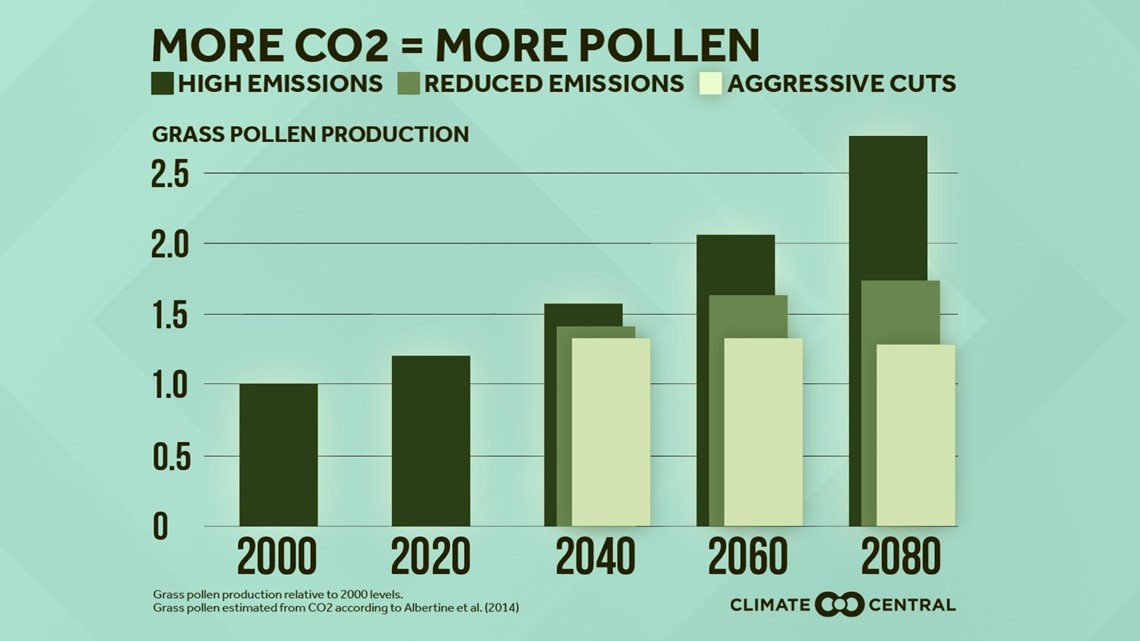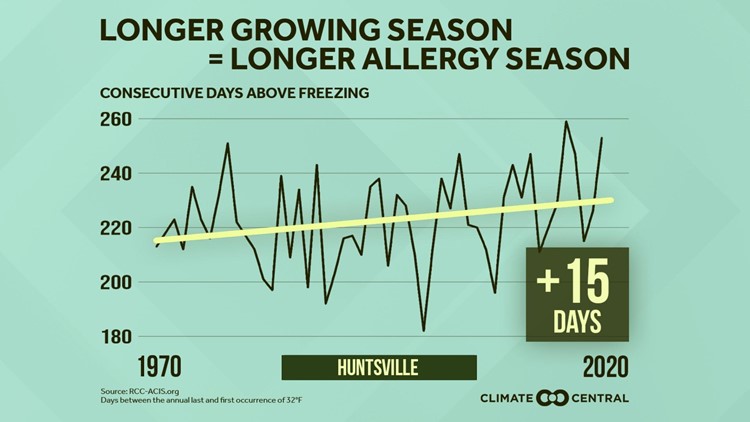HUNTSVILLE, Ala. — According to the Centers for Disease Control and Prevention (CDC), more than 25 million Americans have seasonal pollen allergies. Millions of people are suffering every year, and climate change is only making it worse.
According to a new study, rising temperatures as a direct result of the impact humans have on climate change is the primary factor in recent changes to the pollen season across the United States.
The growing season is starting earlier and ending later. The growing season is the time between the final freeze of Spring and the first freeze in the Fall. With the final freeze occurring earlier and earlier, the pollen season also starts earlier.
Climate Central examined the length of the growing season for more than 200 locations. Over the past half-century, the season lengthened in 82% (166 of 203) of the places analyzed. It also extended by at least four weeks in 38 of those places In the Huntsville area, the Growing Season has increased in length by 15 days since 1970.


The amount of carbon dioxide in the atmosphere directly impacts pollen concentrations because it can stimulate plant growth. One study reported that grass pollen levels doubled when carbon dioxide levels were increased from current levels (about 400ppm) to 800ppm.
These high levels of carbon dioxide, and pollen, are possible at the end of the century if current emissions trends continue and new mitigation efforts are not implemented. However, new analyses suggest that the US can meet the goals of the Paris Climate Accord and reach net-zero emissions by mid-century, leading to fewer additional allergy and asthma attacks.



